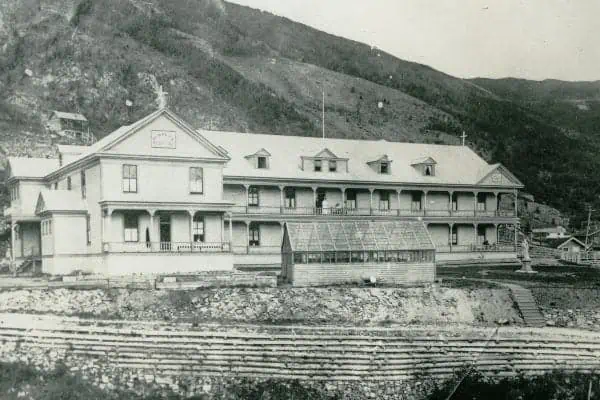It has, unfortunately, been a number of years since a really top-notch piece of stagecraft graced the boards at the Palace Grand Theatre on a regular basis.
Since the demise of the Gaslight Follies Parks Canada has been trying to find ways to bring people into this exciting old building and has sponsored a number of shorter programs over the last few years.
One of them has been the Greatest Klondiker Contest, an interactive theatre presentation put on by the interpretive staff several times a week during the season. This was its second year in production.
In the spirit of various “reality television” productions, this purports to be a contest to have the audience chose who, among the options presented, is the Greatest Klondiker.
Generally there are three options for any given performance, but for the final show of the summer, on August 24, there were five contestants on the stage.
As there were more people on the stage, so there were more in the audience. The word had gone out that this performance might just be a little more over the top than the usual fare, and locals, as well as tourists, filled the seats to find out what that might mean.
Host Janice Cliff welcomed the audience, ambushed three audience members into becoming judges, another two for timekeepers, and explained the rules.
Each contestant had five minutes to present his or her character. There followed a short debate time, a segment with questions from the judges and a three-minute wrap-up.
The winner would be decided by the level of applause, as measured by a suspicious looking Applause-o-Meter.
If this all sounds a little bit like the format for CBC’s The Debaters that shouldn’t surprise anyone.
Martha Black, the wife of George Black, and one of the first women to serve as a Member of Parliament, was portrayed by Marie-Claude Dufresne. She crossed the Chilkoot while pregnant and became a successful businesswoman.
Joe Boyle, a successful miner, community leader and hockey enthusiast, was represented by Sam Coxwell. Boyle was one of the leaders in the importation of the dredge technology that carried the Klondike economically from the Gold Rush period to the late 1950s.
William Ogilvie, a surveyor by trade and civil servant by career, was portrayed by Fred Osson. Oglivie did the actual surveys for the town at the behest of Joe Ladue, and was responsible for it being named Dawson City. He also served as the Yukon’s Commissioner from 1898 to 1902.
Nellie Cashman, portrayed by Gabriela Sgaga, is probably the saint of the bunch. While a successful businesswoman, she donated money to the Sisters of St. Anne for a new hospital and shamed gambling miners into doing the same.
Klondike Kate Rockwell, as represented by Anna Claxton, was clearly the scamp of the bunch, swilling from a bottle throughout the performance and becoming increasingly tipsy as she recounted her exploits on stage and pestered the other characters.
The debate was feisty and the special questions from the judges were more pointed than usual, including questions about housing in the Klondike, and the disposal of garbage and sewage.
Most pointed was the last question to Joe Boyle.
“You boasted that your dredges brought long term economic stability to the North. Then why is Canadian Klondike Dredge No. 4 shutting down?”
That brought cheers from the audience, most of whom were not locals.
“Boyle” opined that perhaps his ghost might come back and haunt the dredge, or perhaps they might start a Joe Boyle Foundation to buy the dredge back and keep it open.
(In actual fact, federal budget cuts are forcing Parks Canada to close the Dredge to on site tours after September 9 for an indefinite period.)
The audience was very responsive to the afternoon’s entertainment, entering into the spirit by cheering and hissing as the stories moved them. It was a hard fought duel of words but in the end the audience and judges chose William Ogilvie as the winner of the day.




